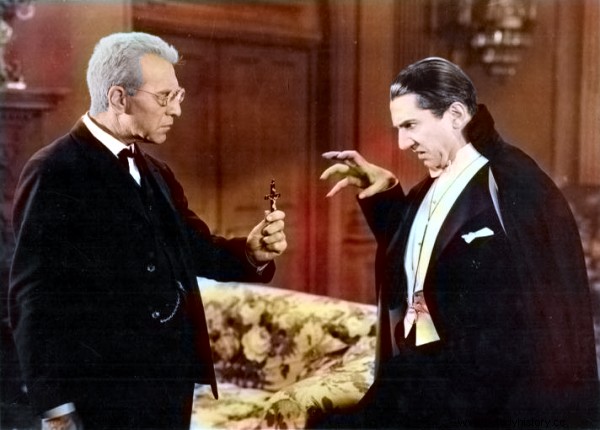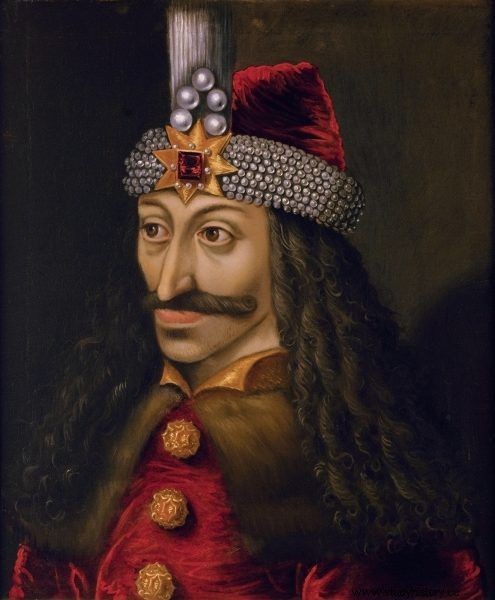Vlad the Impaler, the prototype of the famous Count Dracula, is known primarily because of the unpleasant habit of impaling people for any reason. It turns out, however, that the truth about him is not so simple, because firstly the ruler had reasons, and secondly - he acted in accordance with the law!
Vlad Țepeș, son of Vlad the Devil, was a gifted strategist and ruthless politician. The land he ruled was at the junction of the fighting powers:between the Ottoman Empire, Hungary and Poland, so he had a difficult task. At the same time, he had to maintain good contacts with the Turks, as with Christians, which proved impossible in practice.
Ruling over such troubled lands required a fair amount of dexterity from the Basarab dynasty and, more than once, a bit of terror. Today we associate Țepeșa mainly with the character of the most famous vampire in history:Dracula . We imagine him in the form of incarnate evil, surrounded by a forest of bodies piled on piles. But was he actually that bad?
Difficult to come home
Considering the political situation in which Vlad Dracula (Drăculea - he was also called) found himself after taking power in Wallachia in 1456, it is not difficult to guess that many people wanted his death - or even exile. He himself was well aware of this, and therefore took his steps very carefully at first. However, he had to decide on some alliances.
Ultimately, he swore allegiance to King Władysław the Pogrobowc, pledging himself to defend the Saxons against invasions and to allow trade without taxes. In return, he was granted asylum in the event of a Turkish invasion. Literally four days later, a delegation from Turkey showed up demanding the payment of tribute in exchange for maintaining the existing truce!

photo:Universal Studios / public domain Vlad the Impaler is known mainly as the prototype of Count Dracula, made famous by the novel by Bram Stoker and its numerous adaptations (in the photo:still from the film about Dracula from 1931).
The peaceful Murad II had died a few years earlier, and was succeeded by the reckless and poorly educated Mehmed II, ruthlessly attacking Christians. Faced with the demand for protection money, Vlad decided to stop peaceful contacts with the Turks, while increasing his revenues through a slightly more aggressive trade policy with the Saxons from Brasov and Sibiu. The latter, however, did not respect the new regulations (introduced after the agreement with the Pogrobowiec), for which they soon faced a severe punishment ...
According to some reports, enraged by the lack of respect on the part of the Saxons, the Wallachian prince decided to teach them a lesson . At his order, a whole group of Saxon merchants was captured, deprived of their property, and then impaled. According to the same sources, Vlad was later said to have killed about 300 more from Brasov and Barsa, some by piling and the rest by burning at the stake. And while his dark legend was born then, he failed to achieve his goal.
After this drastic display of strength, Wlad's position was by no means strengthened. Maciej Korwin's candidates for the Wallachian throne burned to overthrow the Impaler. Moreover, the trade bans infuriated numerous nobles - including at the court of Dracula himself. So this one had to work.
As the Athenian historian Laonikos Chalkokondyles recalls, the ruler, dissatisfied with such a turn of events, was to successively execute the families of the boyars who had previously participated in the coups in order to protect themselves from potential traitors. Of course, he had them all impaled. Chalkokondyles reports around 20,000 dead . But where did the idea for such a brutal form of execution come from?
Nothing fancy
According to a specialist in medieval law, Radu Constantinescu, the punishments applied by Vlad the Impaler - though from today's perspective they seem pointlessly cruel - were at that time perfectly adequate to the offenses. The prince did not invent this way of getting rid of his enemies:he mainly used the regulations of the Transylvanian Saxons themselves, as well as other codes:the "Swabian Mirror", Magdeburg law, mining law from Iglau and Nuremberg law.

Due to his "passion" for impalement, Vlad has become the epitome of meaningless cruelty.
In the "performance" of Włada pile driving was only a variation on the punishment of breaking the wheel, burning at the stake or drowning in the West for similar crimes . Such severe consequences faced dishonest merchants and their guarantors, as well as arsonists, poisoners, sorcerers, perjury, adulterers, parricides, and mendicant monks who used draft animals or carts for their work.
And that is why - according to the law - priests could also be seen repeatedly strung on stakes near the seat of Vlad. According to a pamphlet published in 1463, Dracula impaled a monk on the sharpened pole with his own hands, who dared to criticize his actions during the purge. Not only that, for the unlucky clergyman he provided a unique form of punishment, "stuffing" him upside down.
It is very likely that Dracula also used piling as a method of deterring enemies. When the sultan's army entered Wallachia in 1462, the soldiers were to see - as described by Chalkokondyles:
[…] a crowd of piles driven by a strip seventeen furlongs (3 km) long and more than seven furlongs wide (more than 1 km). [...] the emperor, stunned by amazement, said only that could not take the country away from his husband who was capable of such things and was able to use his power and his subjects in such an extraordinary way .
Interestingly, this method of psychological terrorizing society and killing entire families during the changes to the thrones later became very popular - in the 16th century in Moldova and Wallachia, political opponents were disposed of in this way, and the number of victims is estimated at hundreds - with each coup. Dracula in the face of these data could only burn with a blush ... And yet, it was he who, as the "Impaler", made history.
